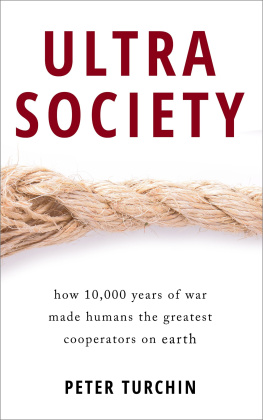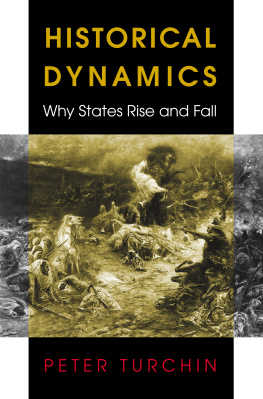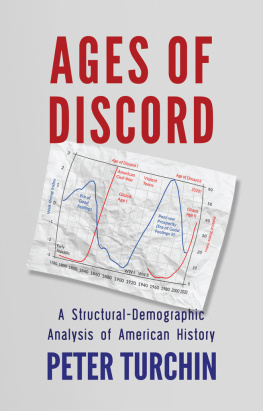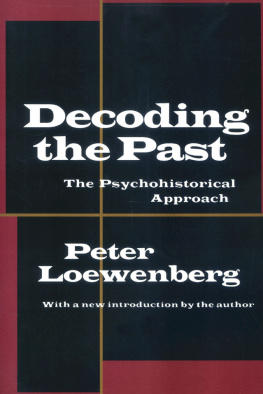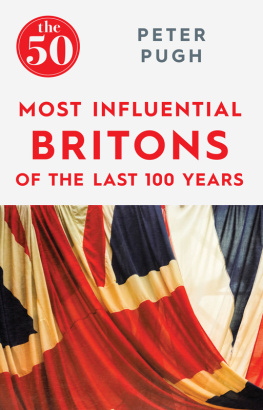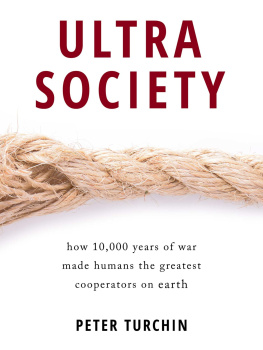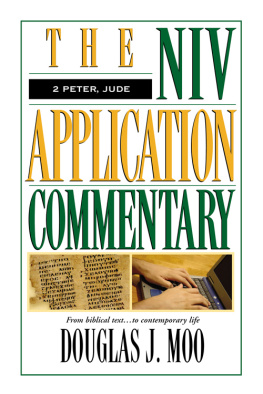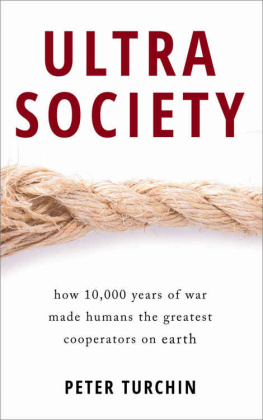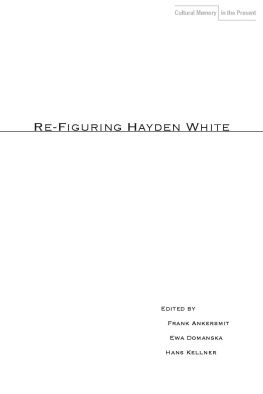Peter Turchin - Figuring Out the Past
Here you can read online Peter Turchin - Figuring Out the Past full text of the book (entire story) in english for free. Download pdf and epub, get meaning, cover and reviews about this ebook. year: 2020, publisher: PublicAffairs, genre: Politics. Description of the work, (preface) as well as reviews are available. Best literature library LitArk.com created for fans of good reading and offers a wide selection of genres:
Romance novel
Science fiction
Adventure
Detective
Science
History
Home and family
Prose
Art
Politics
Computer
Non-fiction
Religion
Business
Children
Humor
Choose a favorite category and find really read worthwhile books. Enjoy immersion in the world of imagination, feel the emotions of the characters or learn something new for yourself, make an fascinating discovery.

- Book:Figuring Out the Past
- Author:
- Publisher:PublicAffairs
- Genre:
- Year:2020
- Rating:4 / 5
- Favourites:Add to favourites
- Your mark:
- 80
- 1
- 2
- 3
- 4
- 5
Figuring Out the Past: summary, description and annotation
We offer to read an annotation, description, summary or preface (depends on what the author of the book "Figuring Out the Past" wrote himself). If you haven't found the necessary information about the book — write in the comments, we will try to find it.
Figuring Out the Past — read online for free the complete book (whole text) full work
Below is the text of the book, divided by pages. System saving the place of the last page read, allows you to conveniently read the book "Figuring Out the Past" online for free, without having to search again every time where you left off. Put a bookmark, and you can go to the page where you finished reading at any time.
Font size:
Interval:
Bookmark:
 Copyright The Economist Newspaper Ltd, 2020 Text copyright Peter Turchin and Daniel Hoyer, 2020 Cover design by Pete Garceau Cover illustrations iStock/Getty Images Cover copyright 2020 by Hachette Book Group, Inc. Hachette Book Group supports the right to free expression and the value of copyright. The purpose of copyright is to encourage writers and artists to produce the creative works that enrich our culture. The scanning, uploading, and distribution of this book without permission is a theft of the authors intellectual property. If you would like permission to use material from the book (other than for review purposes), please contact permissions@hbgusa.com. Thank you for your support of the authors rights.
Copyright The Economist Newspaper Ltd, 2020 Text copyright Peter Turchin and Daniel Hoyer, 2020 Cover design by Pete Garceau Cover illustrations iStock/Getty Images Cover copyright 2020 by Hachette Book Group, Inc. Hachette Book Group supports the right to free expression and the value of copyright. The purpose of copyright is to encourage writers and artists to produce the creative works that enrich our culture. The scanning, uploading, and distribution of this book without permission is a theft of the authors intellectual property. If you would like permission to use material from the book (other than for review purposes), please contact permissions@hbgusa.com. Thank you for your support of the authors rights.
PublicAffairs Hachette Book Group 1290 Avenue of the Americas, New York, NY 10104 www.publicaffairsbooks.com @Public_Affairs First US Trade Paperback Edition: November 2020 Published in 2020 in the UK under exclusive license from The Economist by Profile Books Ltd Published by PublicAffairs, an imprint of Perseus Books, LLC, a subsidiary of Hachette Book Group, Inc. The PublicAffairs name and logo is a trademark of the Hachette Book Group. The Hachette Speakers Bureau provides a wide range of authors for speaking events. To find out more, go to www.hachettespeakersbureau.com or call (866) 376-6591. The publisher is not responsible for websites (or their content) that are not owned by the publisher. Library of Congress Control Number: 2020945052 ISBNs: 978-1-5417-6268-8 (paperback); 978-1-5417-3676-4 (ebook) E3-20201023-JV-NF-ORI
Yet we understand our own world through data: vast arrays of statistics that reveal the workings of our societies. Why not the past as well? Figuring Out the Past turns a quantitative eye on our collective trajectory. Behind the fleeting dramas of individual factions and rulers, it looks for large-scale regularities. It asks how key social and technological innovations spread around the world, and it pinpoints outliers from the general trends. As historians Jo Guldi and David Armitage wrote in The History Manifesto: in a crisis of short-termism, our world needs somewhere to turn to for information about the relationship between past and future. The book in your hands draws on a vast reservoir of historical data that was collected precisely to serve that need.
Seshat: Global History Databank was founded in 2011 with the long-term goal of collecting and indexing as much data about the human past as can be known or credibly estimated. Named after the ancient Egyptian goddess of scribes and record-keeping, Seshat is the work of a large international team of historians, archeologists, anthropologists and other specialists. Inevitably incomplete and constantly being updated, it nevertheless has a strong claim to be the most comprehensive body of information about human history ever assembled in one place. (You can explore it at seshatdatabank.info) Much as contemporary economic data are used to test theories about the day-to-day evolution of economic systems, Seshat was created to test long-range hypotheses about the rise, workings and fall of societies across the globe. For example, what causes states to develop and spread in the way they have? Why have some societies experienced high levels of growth and well-being while others stagnated? What role have warfare, religion and technology played in the evolution of social institutions? What causes societies to collapse or fracture? The only way to answer questions like these is to test them against the historical record. Seshat, more than any other resource, collects as much of that record as possible, collated and formatted to make testing practical.
The information presented in this book is intended to illustrate some key trends and patterns that emerge when you look at history from Seshats dizzying vantage point. A caveat: the figures presented here are only a sample of the data compiled by the Seshat project, which in turn is only a subset of what is known about past societies. All the same, because of the databanks remarkable breadth of scope and through the collaboration of dozens of the worlds leading historical experts, the rankings and comparisons that follow are collectively as reliable as could be obtained from any existing resource. They reflect the best, most accurate and most complete information available at the time of writing. As of 2020, Seshat holds information on over 450 historic societies (identified within the databank itself using the term polities, to avoid ambiguity). It starts among the first West Asian farming communities in the Neolithic period about 10,000 years ago and ends in the 19th century CE .
The Neolithic, in certain regions described as the Agricultural Revolution, is the time when humans began to settle in one spot and build recognisably distinct communities. Conversely, the databank stops compiling figures for more modern societies largely because this more recent history is so well known. This book focuses, then, on these lesser-known periods covered by the databank. Nevertheless, data on a handful of 19th- and 20th-century nations are included for comparison among the society profiles that follow. (They are excluded from rankings and comparisons, which are confined to the preindustrial world so as to make room for these less familiar, but nevertheless important, societies to stand out.) Many of the types of data presented in this book will be familiar to readers of The Economists annually updated Pocket World in Figures. Measures such as society size, populations and life expectancy provide a nearly continuous line from the ancient past to the present day.
Others are more exotic, illuminating some of the key traits that distinguished past societies: their agricultural and metallurgic technologies; their governing institutions and provision of public goods; their openness to principles of equality; and so on. Figuring Out the Past offers sections ranking societies on these items, separated into eras (ancient, medieval, early modern and modern), along with rankings across the eras. It also traces the geographical spread of key technologies and social innovations, from mounted cavalry to coinage, to show where and when some of the most important breakthroughs took place, and how they diffused around the globe. It shows when these crucial innovations arrived in different regions of the world, shining a spotlight on areas often overlooked in global histories, such as sub-Saharan Africa, South America and Polynesia, some of which encountered key technologies for the first time in the ships of colonisers, while others experienced a long history of complex societies and saw indigenous innovations well before the arrival of Europeans, perhaps to the surprise of many readers. The societies presented here represent those for which the Seshat Databank has well-curated data. As many of these may be unfamiliar to readers, the book contains detailed society profiles which offer a close look at their make-up with respect to a common set of key indicators, along with short introductions highlighting useful information about each.
Taken together, the figures and profiles collected here show how far we have come as a species over the past 10,000 years: from our origins in roving hunter-gatherer bands, to the first settled villages and small chiefdoms, to archaic states ruled by god-kings wielding nearly unlimited authority, to modern nation-states populated by hundreds of millions of people powered by ever-evolving technologies. More than this, however, these figures show how much we all have in common, both with our ancestors and with each other. We all share the need to organise and maintain social cohesion among large and diverse populations. We all have to innovate to survive in changing physical and social environments, to bolster ourselves against the vicissitudes of natural disasters and to interact with neighbours (who may not have peaceful intentions). There is, moreover, a deep continuity in our symbolic lives. We all build glorious monuments to our own ingenuity and creativity.
Font size:
Interval:
Bookmark:
Similar books «Figuring Out the Past»
Look at similar books to Figuring Out the Past. We have selected literature similar in name and meaning in the hope of providing readers with more options to find new, interesting, not yet read works.
Discussion, reviews of the book Figuring Out the Past and just readers' own opinions. Leave your comments, write what you think about the work, its meaning or the main characters. Specify what exactly you liked and what you didn't like, and why you think so.

